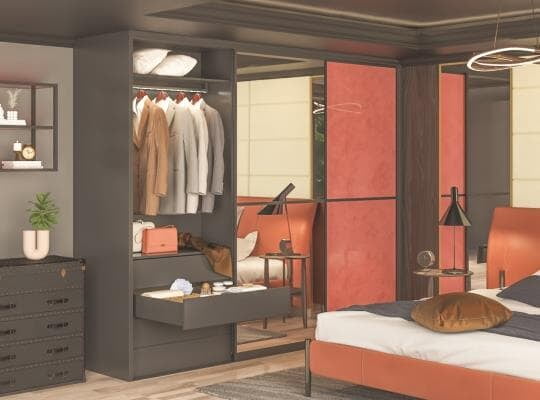Introduction
When it comes to home interiors, selecting the right plywood thickness is crucial for achieving both durability and aesthetic appeal. Plywood is a versatile material used in various applications, including cabinetry, flooring, wall paneling, and furniture. However, with different thicknesses available, choosing the appropriate one for your specific needs can be challenging. In this comprehensive guide, we’ll explore how to choose the right plywood thickness for your home interiors, ensuring you make informed decisions that balance performance and design.

Understanding Plywood Thickness
Plywood thickness is measured in millimeters or inches and typically ranges from 1/8 inch (3 mm) to 1 1/4 inches (32 mm) or more. The thickness you choose will depend on several factors, including the application, load-bearing requirements, and aesthetic preferences. Let’s break down these considerations to help you make the best choice for your project.
1. Consider the Application
The intended use of plywood will significantly influence the thickness you need:
**a. Cabinetry and Shelving
For cabinetry and shelving, where the plywood will support weight and be visible, a thickness of 3/4 inch (19 mm) is commonly used. This thickness provides the necessary strength and durability to hold items without bending or warping. If you’re constructing high-load-bearing shelves, you might consider thicker plywood, such as 1 inch (25 mm).
**b. Furniture
When building furniture, such as tables or chairs, a thickness of 1/2 inch (12 mm) to 3/4 inch (19 mm) is generally appropriate. Thicker plywood can be used for more robust furniture or pieces that require additional support. For example, a dining table might benefit from 3/4 inch plywood to ensure stability and durability.
**c. Wall Paneling
For wall paneling, thinner plywood, such as 1/4 inch (6 mm) to 1/2 inch (12 mm), is often sufficient. These thicknesses provide a smooth surface for painting or veneering while being lightweight enough to handle easily. Thicker plywood may be used if the paneling needs to support additional features or withstand impact.
**d. Flooring
For flooring, especially in areas where durability and load-bearing are essential, a thickness of 1/2 inch (12 mm) to 3/4 inch (19 mm) is recommended. This ensures that the plywood can support the weight of furniture and foot traffic without sagging or bending.
2. Evaluate Load-Bearing Requirements
Understanding the load-bearing requirements is crucial in selecting the right thickness:
**a. Heavy Loads
For areas that will support heavy loads, such as shelves, cabinetry, or flooring, opt for thicker plywood to ensure adequate strength. Thicker plywood distributes weight more effectively and minimizes the risk of sagging or warping.
**b. Light Loads
For applications with lighter loads, such as decorative paneling or lightweight furniture, thinner plywood may suffice. However, it’s still essential to ensure that the chosen thickness provides adequate support and does not compromise the integrity of the installation.
3. Assess Environmental Conditions
Environmental conditions can impact the choice of plywood thickness:
**a. Moisture and Humidity
In areas prone to high moisture or humidity, such as bathrooms or kitchens, thicker plywood or marine-grade plywood may be necessary to resist swelling, warping, or deterioration. Marine-grade plywood, treated to withstand moisture, is particularly suitable for these environments.
**b. Temperature Fluctuations
For regions with significant temperature fluctuations, choose plywood that can withstand thermal expansion and contraction. Thicker plywood generally performs better in such conditions, but ensure it is properly sealed to prevent moisture ingress.
4. Aesthetic Considerations
The thickness of plywood can affect the visual appeal of your interiors:
**a. Edge Detailing
Thicker plywood provides more material for edge detailing, such as molding or trim. This can enhance the visual appeal of cabinetry or furniture, creating a more substantial and polished look.
**b. Surface Finish
The thickness of plywood can also impact the finish. Thicker plywood allows for more detailed surface treatments, such as veneering or staining. Ensure the chosen thickness supports your desired finish without compromising the overall design.
5. Cost and Budget
Plywood thickness affects cost, with thicker plywood generally being more expensive. Consider your budget and weigh the cost against the benefits of increased durability and performance. For many applications, a balance between cost and thickness will provide satisfactory results without overspending.
6. Consulting with Professionals
If you’re uncertain about the right plywood thickness for your project, consulting with professionals can provide valuable insights. Architects, designers, and contractors can offer recommendations based on their experience and the specific requirements of your project.
7. Choosing the Right Plywood Grade
In addition to thickness, the grade of plywood also affects performance and appearance. Plywood grades range from A (highest quality) to D (lowest quality), with grades indicating the appearance and quality of the surface layers. Higher grades are suitable for visible surfaces, while lower grades can be used for structural purposes where appearance is less critical.
Conclusion
Choosing the right plywood thickness for your home interiors involves considering the application, load-bearing requirements, environmental conditions, aesthetic preferences, and budget. By carefully evaluating these factors, you can select the appropriate thickness that ensures durability, functionality, and visual appeal for your project. Whether you’re working on cabinetry, furniture, wall paneling, or flooring, the right plywood thickness will contribute to the overall success of your interior design.
If you have any questions or need further assistance in selecting the ideal plywood thickness, don’t hesitate to reach out to industry professionals or suppliers. With the right information and guidance, you can make informed decisions that enhance the beauty and performance of your home interiors.






